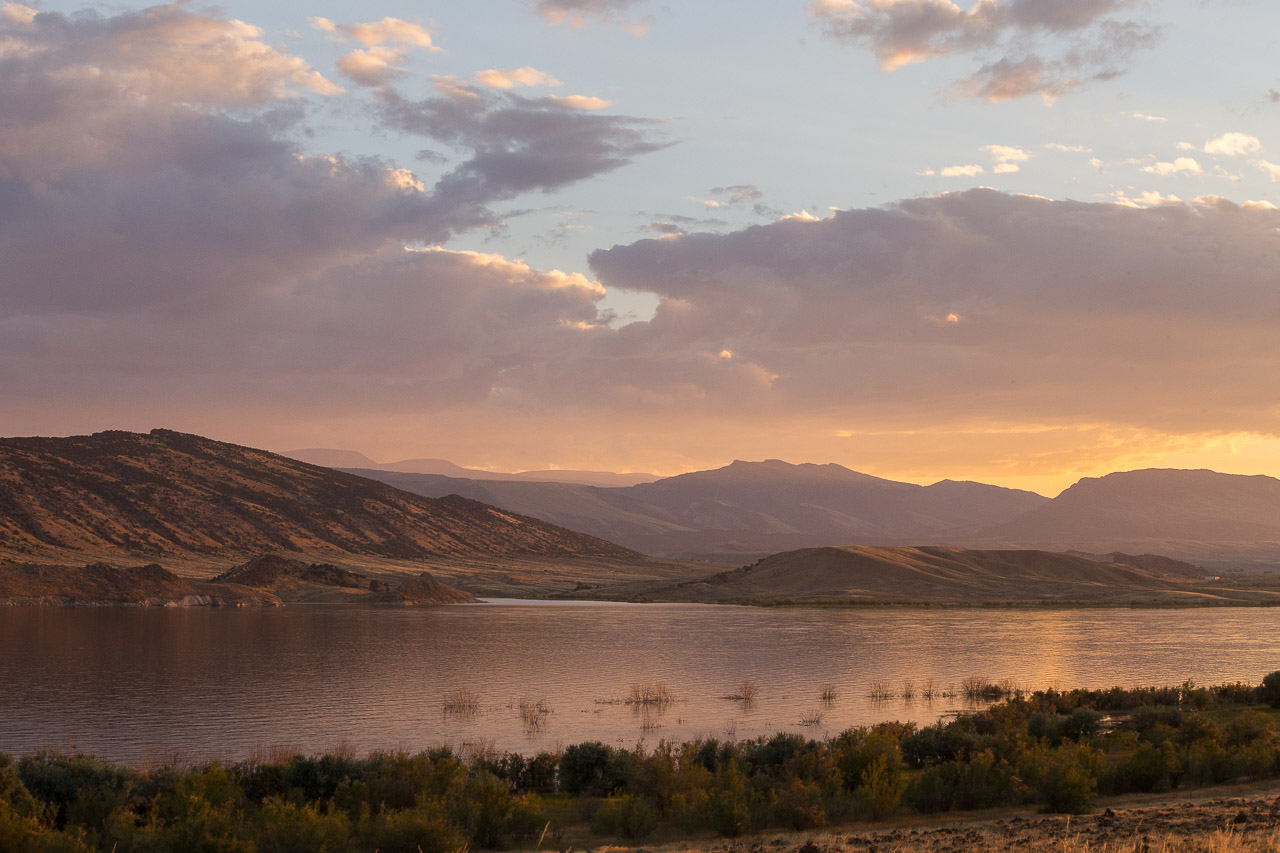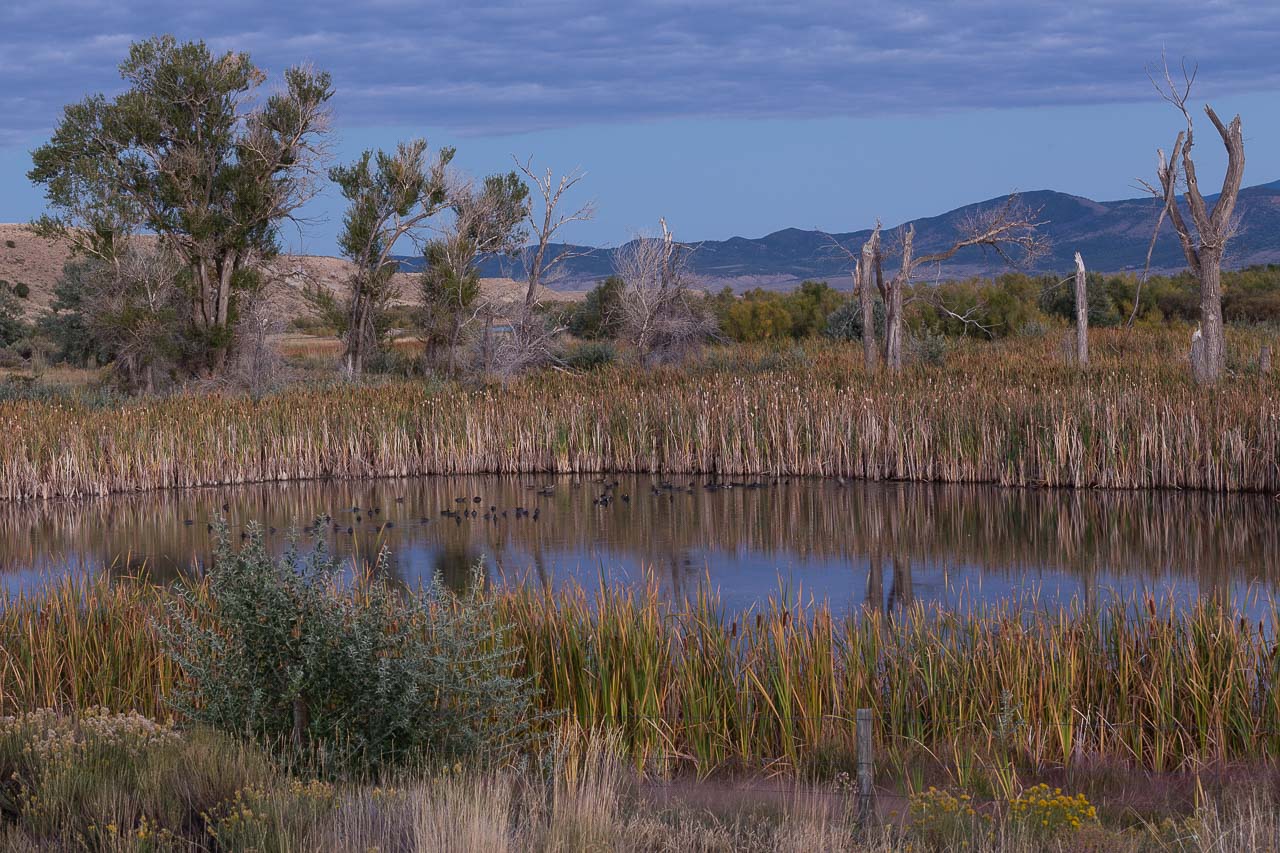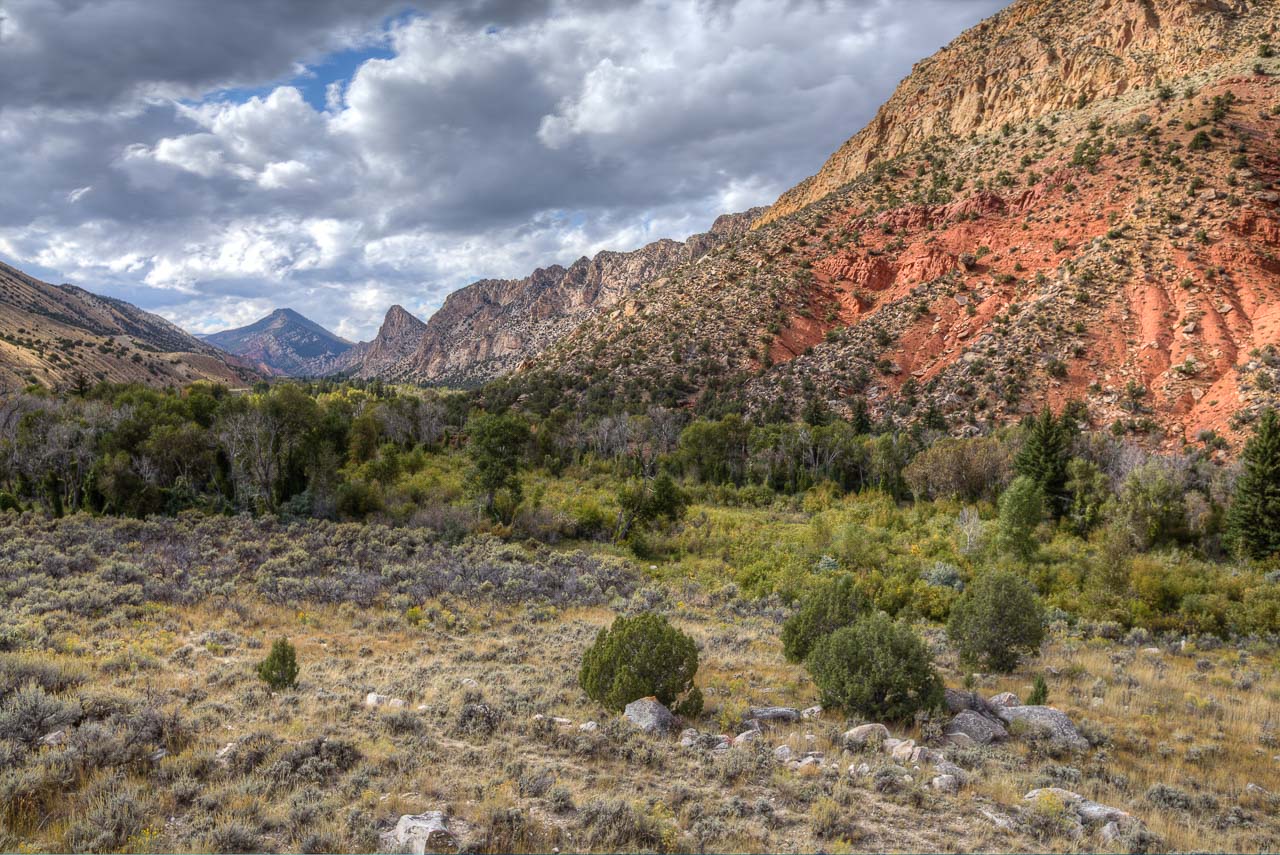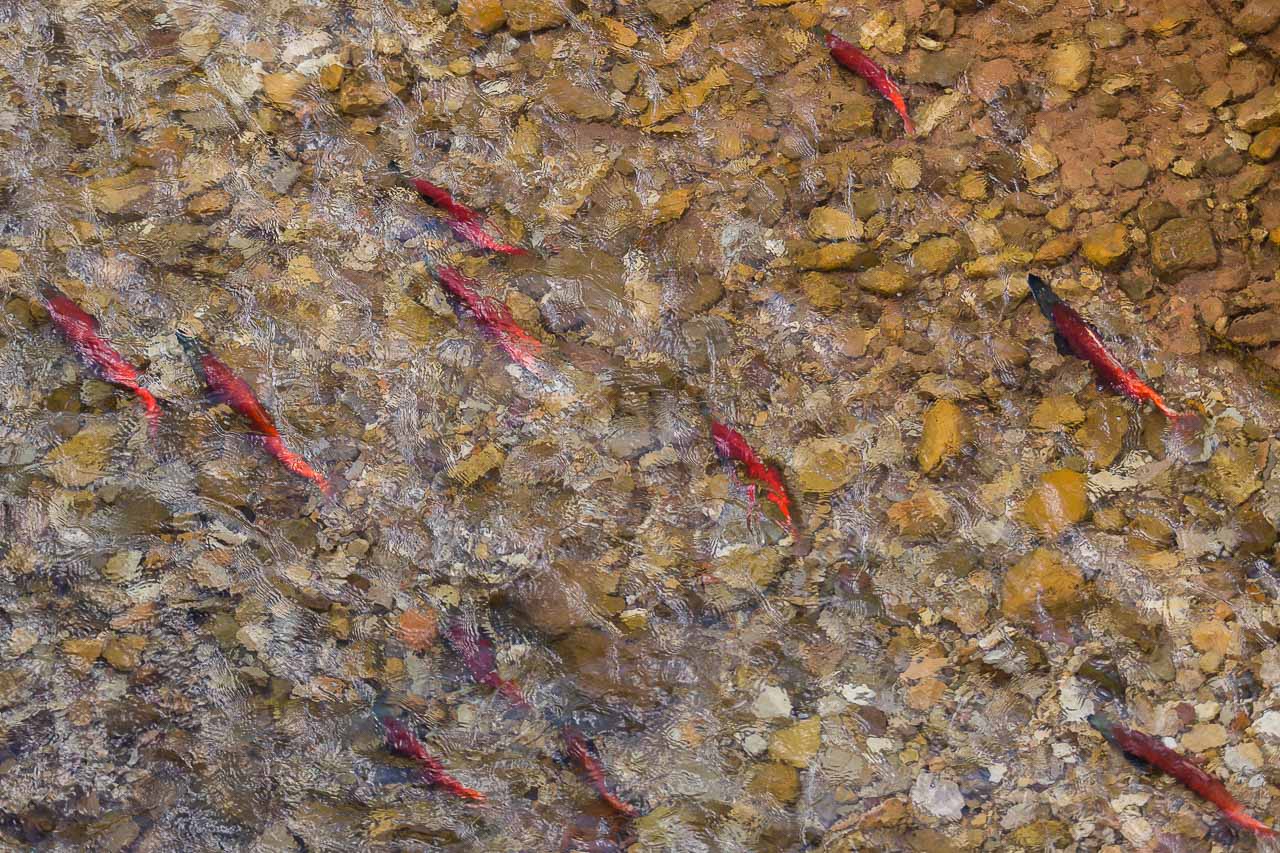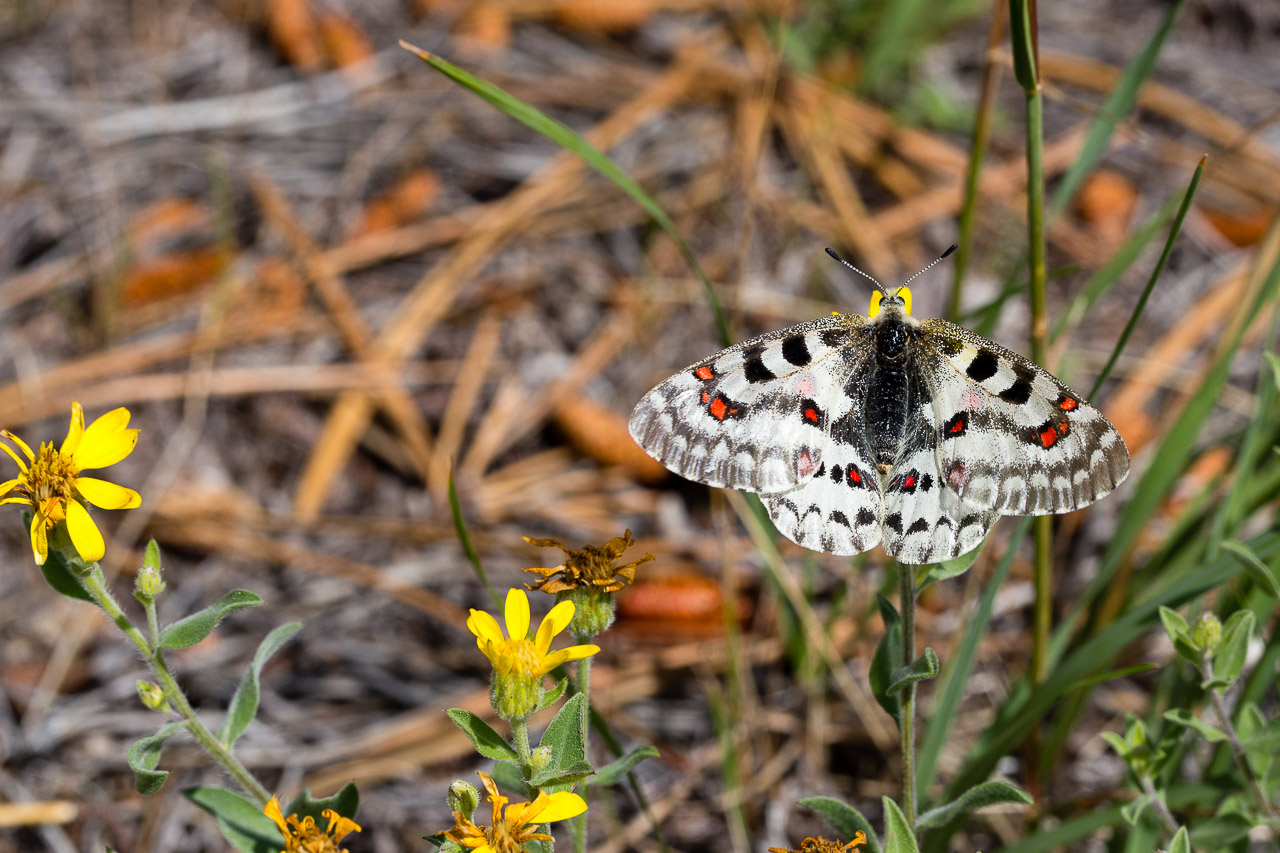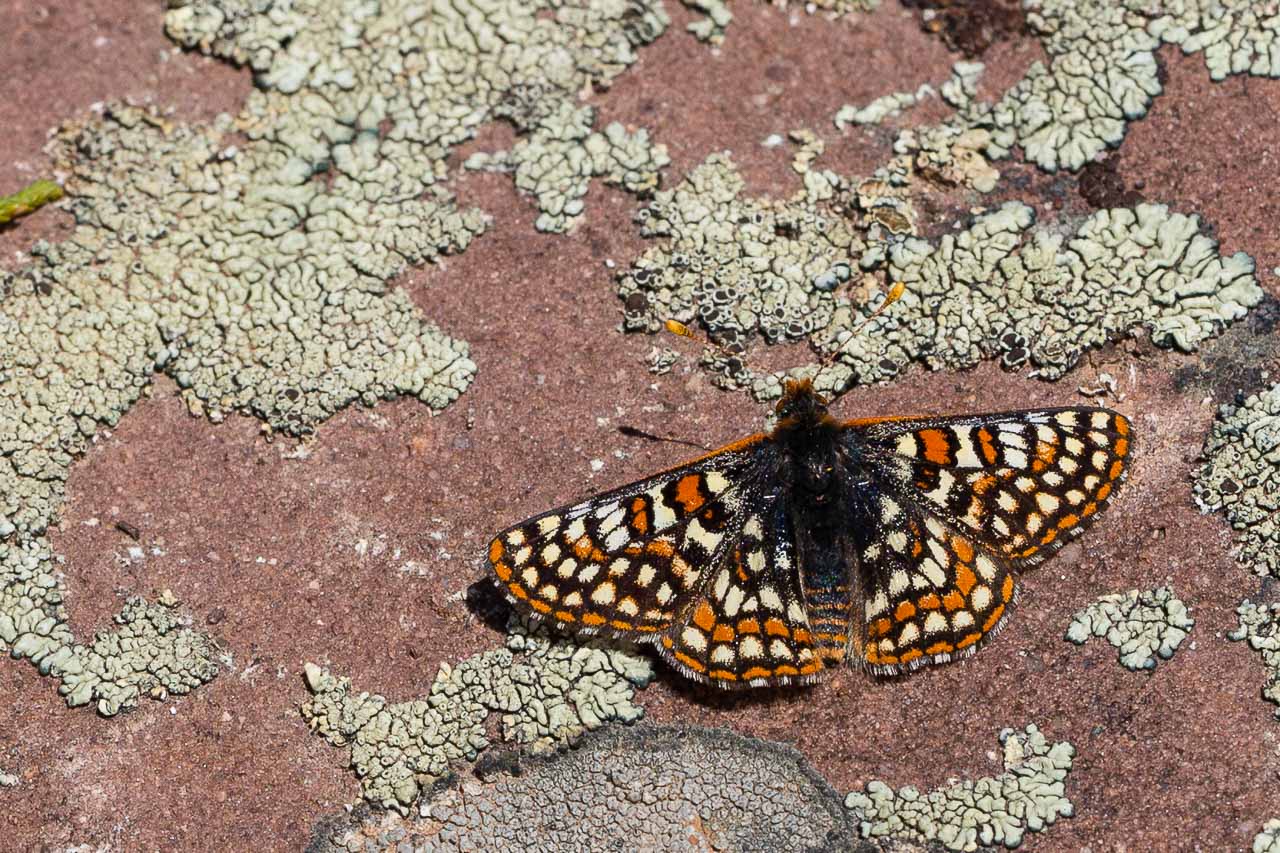THE FLAMING GORGE-UINTAS SCENIC BYWAY of northeastern Utah rises from the sagebrush desert in Manila, crosses the Uinta Mountains, and drops back into sagebrush just north of Vernal. Deer, moose, elk, and turkeys can often be seen along the byway, but for a more intensive wildlife experience, wander slightly off the main road and discover one of the richest wildlife areas in the western United States.
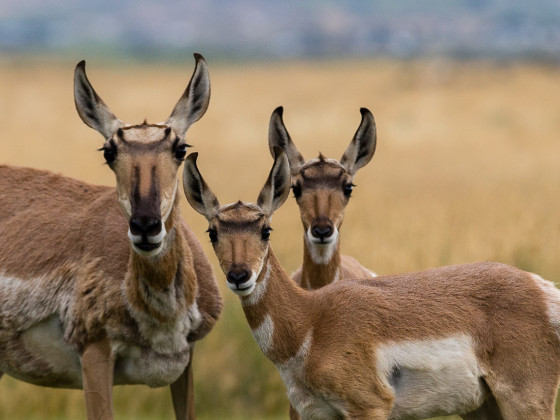
Guide to Epic Wildlife Viewing Along Utah’s Flaming Gorge-Uintas Scenic Byway
Lucerne Valley Campground
The Lucerne Valley Recreation Road (FR146), northeast of Manila, threads between steep sandstone cliffs, crosses an open sagebrush grassland, and comes to an abrupt end on the Lucerne Valley Marina boat launch. The drive is worth it for the scenery alone, but I’m usually headed for the Lucerne Valley Campground just west of the marina. It’s where the antelope roam.
Tips once you’re there:
* Pronghorn meander through the Lucerne Valley Campground, bed their fawns down under the shade of the Russian olive trees, and graze on the green grass. They’re pretty patient with people, but they’re not tame. Enjoy them from a distance and keep a grip on your dog.
* The white-tailed prairie dogs that seem to be everywhere in the campground are actually pretty special since they’re much rarer than their black-tailed cousins. Enjoy prairie dog-watching in May and June when the pups emerge from the dens and play tag through the grass and over the rocks. Be careful. They also like to dash in front of cars and some just aren’t as fast as others. You won’t see many prairie dogs during the heat of the summer. They wisely stay underground where it’s cool.
* Each year, a pair of Osprey — commonly known as fish hawks — nest on top of a large pole near the A Loop of the campground. Osprey nearly disappeared from this area in the 60s when the rising waters of the Flaming Gorge Reservoir covered the dead trees and snags that the Osprey traditionally used for nesting. Utah Division of Wildlife Resources and Utah Power and Light teamed up to install utility poles with nesting platforms — like this one — all along the reservoir’s edge. Today, the Flaming Gorge National Recreation Area has the largest colony of nesting osprey in Utah. Osprey begin nesting in the late spring and the chicks are visible (and hungry!) in June and July. Watch for the adults bringing in fresh fish from the lake for dinner.
Henry’s Fork Wetland (FR071)
When the Flaming Gorge Reservoir flooded the Green River valley in the 1960s, the birds lost out. Water lapped against rocky cliffs and the shallow wetlands rimmed with cattails and shaded by cottonwood trees were submerged. To restore some of the lost waterfowl nesting habitat, Henry’s Fork Wetland was created in the late 1990s. The wetland area, with its 27 acres of ponds, 51 acres of shallow wetlands, and 300 acres of riparian and marsh habitat along the Flaming Gorge Reservoir is one of my favorite places to birdwatch.
Tips once you’re there:
* Get the big picture from the Henry’s Fork Wetland Overlook at the head of the Lucerne Valley Recreation Road. With binoculars, you can see White Pelicans and seagulls lined up on a log, enjoy flocks of Canadian Geese as they forage in the mud, and watch a pair of Osprey raise their family.
* For the more enthusiastic birder, a narrow hiking trail takes off from the overlook, winds down the bluff, and meanders through the wetlands. With a bit of bushwhacking, you can get close enough to the ponds to see Western grebes, ducks, herons, and American Coots. The ducks will flush with loud honks and a whirring of wings if you’re not exceptionally quiet and move very slowly.
* When the waterfowl take off (no one can move that slowly), sit still and wait for the cattails to start twitching. Small, secretive birds such as the marsh wren like to skip their way between cattail stems. In May and June, dozens of male yellow-headed blackbirds sit on top of the cattails to display their sexiest moves and sing their best song—a sound similar to a bawling calf at weaning time (but not quite as musical).
* Walk along the berms between ponds to reach the cottonwood and willow grove on the western edge of the wetlands. Soon a leaf will tremble, a limb will twitch, and a flash of color will catch your eye just as you realize that the trees are full of Yellowthroats, flycatchers, warblers, and woodpeckers.
*In the early spring, Red-tailed Hawks nest in the cottonwoods. They’re easily disturbed and will scream at you from overhead. It’s best just to stay away from the cottonwoods at that time of year and let them raise their young in peace.
Sheep Creek Canyon Nature Trail (UT 44)
If fish-watching isn’t high on your wildlife-viewing priority list, a visit to the Sheep Creek Canyon Nature Trail may change your mind. Sheep Creek tumbles over rocks on its way out of the mountains and runs along sheer bluffs of sandstone until it empties into Flaming Gorge Reservoir. As a desert-dweller, I’m easily entertained by flowing water, but add fish — especially big, bright red ones — and I’m mesmerized.
Tips once you’re there:
* Fish-watching is a fall event. In September, the kokanee salmon turn scarlet red and swim from the deep, still water of the reservoir up Sheep Creek to their gravel spawning grounds where they lay eggs and die. The water is so shallow and clear that you can stand on one of several bridges across the creek and watch the fish. For hours.
* Read the interpretive panels at the bridge to learn about the life cycle of the kokanee. Better yet, arrive on the third Saturday of September for Salmon Day. A wildlife biologist from the Utah Division of Wildlife can answer all your questions about this special species of landlocked salmon.
* Even if you miss the salmon run, be sure to explore the Sheep Creek Canyon Nature Trail. It’s an easy, ¾ mile walk that crosses the creek and loops through the shade of cottonwoods, willows, and blue spruce trees. Beautiful interpretive panels provide information about everything from bats to archeology. Every time I visit, I reread the panels and appreciate a little bit more the importance of these riparian areas for animals and people. I still haven’t seen an American Dipper (a small bird that uses its wings to “fly” underwater) but I never give up hope.
Dowd Mountain (FR094)
I’m a butterfly fanatic, so Dowd Mountain is high on my list of places to visit on sunny, warm days in the late spring and summer. The improved dirt road that branches off UT 44 cuts through stands of ponderosa pines and forest clearings filled with sagebrush and wildflowers. At the end of the road, Dowd Mountain Overlook provides an outstanding view of the Flaming Gorge Reservoir. Gawk for a while (everyone does), then get down to the business of butterfly-watching.
Tips once you’re there:
* Start on the 2-mile loop trail just northwest of the parking area. This easy walk crosses open wildflower meadows, meanders through a small grove of aspen, and cuts back under the ponderosa pines. The trail will branch off and becomes part of an 11-mile mountain-biking trail if you’re really enthusiastic about butterfly watching.
* Butterfly season starts in late May. Swallowtails glide through the pines, several species of whites flit among wildflowers, and Edith’s Checkerspots catch your eye and then seem to disappear as they land on flat red rocks and spread their wings. Be on the lookout for Weidemeyer’s Admirals. They like to sit in the trail with their wings folded, making them nearly impossible to see until they flush and glide off into the sagebrush. My favorite is the stunning Rocky Mountain Parnassian. Primarily white with black markings and bold red spots, this alpine butterfly flies slowly and stops often to nectar on yellow flowers. Don’t miss this summer treat!
* On your way back to UT44, scout sagebrush meadows for Common Ringlets and other satyr butterflies. They have a bouncy flight low to the ground and perch in open areas or on rocks.
Red Canyon Road (FR095)
Rocky Mountain bighorn sheep are an iconic species of the steep slopes of the Uinta Mountains. They appear in ancient rock art and modern place names, but by the 1960s, most of the bighorns had disappeared — overhunted and displaced by domestic sheep. They’re on the comeback though, and the open pine forests of Red Canyon Road are an excellent place to see them.
Tips Once You’re There:
* In the spring and summer, the ewes, lambs, and young males hang out around the campgrounds, drink from Greens Lake, and graze along the road. The rams, with their massive curling horns, will appear in the fall.
* Explore the nature trail around Greens Lake. Even if you don’t see the bighorns, there are plenty of interesting birds in the ponderosa pines and butterflies nectaring on flowers around the lake.
Seeing wildlife in its natural habitat is always fun, but remember that these animals are wild. Give them space and respect. If an animal changes its behavior because of you, it’s time to move on. But don’t worry. There’s more to discover just up the trail.
